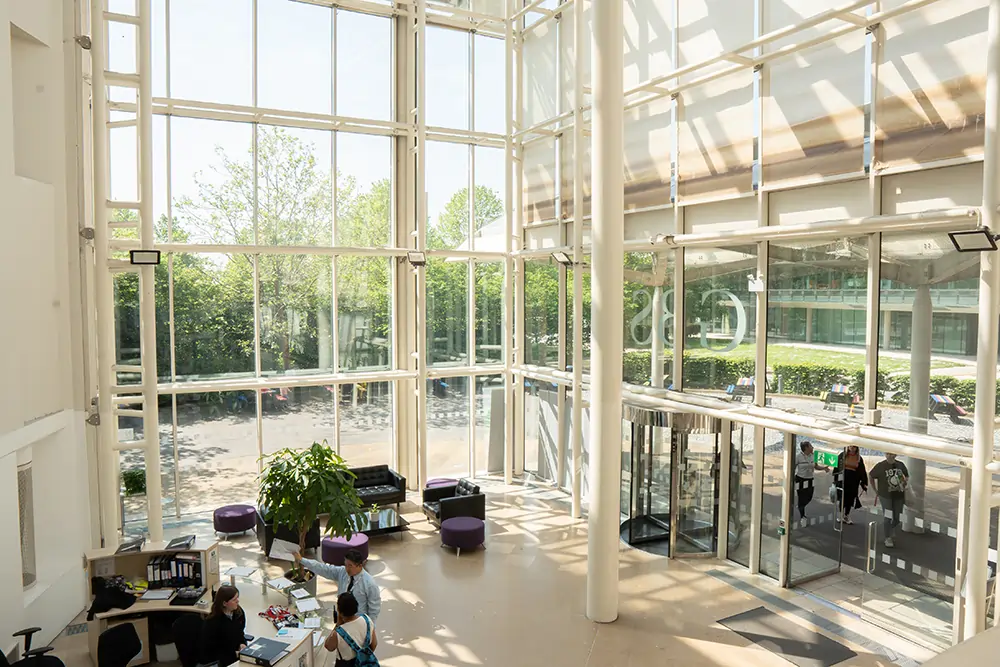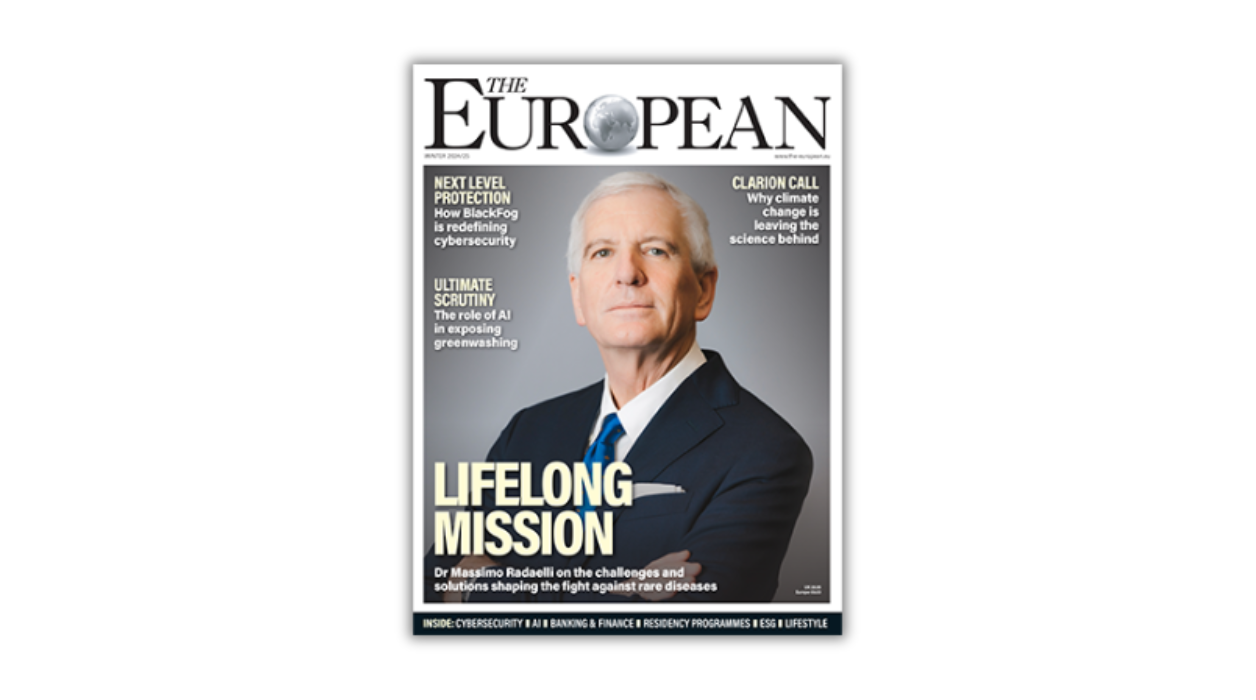Harness the power of neurodiversity

John E. Kaye

By offering a whole range of unique skills and insight, neurodiverse teams can help businesses thrive creatively, says Caragh Medlicot
Did you know that the secret to a truly innovative team lies in its neurological make up? To understand why neurodiverse teams help innovation thrive in businesses, we need to first establish three things: what neurodiversity is, what innovation is, and how the two complement each other. With a full understanding of each area you’ll be able to see just how powerful neurodiverse teams are in offering a competitive advantage through innovation.
So, first things first, what is neurodiversity? The term has certainly become something of a buzzword in recent years, and as buzzwords often get repeated until they lose all meaning, it’s extra important we have a full and comprehensive understanding of what it is. Neurodiversity (ND) refers to a variety of neurological conditions which are associated with cognitive variations resulting in conditions such as dyslexia, dyspraxia, dyscalculia, ADHD, Tourette’s syndrome and autism.
Next, what is innovation? Arguably the biggest buzzword of them all! The term gets bandied around a lot in the business world, and it’s well established that it’s the secret sauce when it comes to success. And yet, in our praise of innovation we sometimes turn it into an elusive and unattainable quality. In actual fact, innovation – in the simplest of terms – is just the marriage of creative thinking and sound logic which can then be applied together to create something novel and exceptional. And isn’t that something every business could do with a bit more of?
Now, onto the really important bit: why a neurodiverse team is a catalyst for innovation. It goes without saying that neurodiversity is important on an equalities front, and studies have been showing for many years that diversity and equality are central to all good businesses. Yet, neurodiversity in particular is also highly correlated with increasing a team’s creativity, problem solving skills, and overall innovation. And once you understand neurodiverse people better, it’s not hard to see why.
Free of the proverbial box
I have spent my whole career teaching people that it’s not thinking outside the box which produces creativity, but removing the box altogether. The box, in this case, is symbolic of our own limiting ideas and beliefs. These are conditioned into us in many forms and are a primal reason why we lose our ability to be creative as we age. Well, it turns out that many neurodiverse people are resistant to that proverbial box – the reasons for this are multiple. I hear from many neurodiverse people that they felt left behind in a rigid education system, that they seemed to be the odd one out in school, and this experience often results in a natural aversion to doing things the “conventional” way. It’s not surprising then that neurodiverse individuals have a different perspective on tackling problems and are less likely to succumb to common thinking errors such as group think and other biases.
While the societal treatment of neurodiverse people may account for some of their agility and innovation savvy – after all, when the learning system is geared up to exclude you, you have to get pretty creative to stay engaged – there are a number of other reasons for their innovative abilities. It’s important to remember that neurodiversity is an umbrella term which encompasses vast and numerous neurological conditions, and these different conditions manifest in different ways. While it would be impossible to include an exhaustive list, let’s look at a few common conditions and why they lend themselves to innovation in business.
Firstly, dyslexia. This neurological condition is associated with problems processing text, such as reading and writing. Despite some old and highly damaging stereotypes, dyslexia has absolutely no bearing on intelligence, and in fact is associated with a number of positive skills such as a flair for pattern spotting, visual processing, and big picture thinking, all of which can make dyslexic individuals excellent strategists (which is probably why they have such an elevated presence in organisations such as NASA, with some estimates suggesting that 50% of NASA employees are in fact dyslexic). Certainly qualities all innovative teams could do with more of.
In a similar vein to dyslexia, individuals with ADHD have often been given a rough deal in the education system. As its name suggests, Attention Deficit Hyperactivity Disorder presents issues such as erratic swings between bursts of focus and hyperactive inattention, and is sometimes associated with impulsiveness. And yet, individuals with ADHD have an almost preternatural ability to produce huge amounts of high quality work in a short amount of time due to their ability to “hyperfocus”. Their fast-moving brain also powers divergent thinking – a key ingredient to innovation – while their impulsivity makes them much more likely to throw themselves into even difficult challenges with energy and determination. ADHD individuals also make strong leaders with their positive, infectious energy making them incredible motivators for teams both big and small.
While both dyslexia and ADHD are associated with big picture thinking and generalised creativity, other neurological conditions such as autism provide strengths in different areas. Autism is perhaps the most frequently misunderstood of all the neurological conditions, largely due to the social implications
which relate to it. Many individuals with autism struggle with certain types of social communication and interaction, and also deal with heightened sensory issues such as an aversion to overwhelming sounds, smells, tastes or textures. And yet, there are innumerable positives associated with autism, too. For example, autistic employees tend to be exceptionally thorough with a real eye for detail. They are also more likely to remember key information, offer in-depth knowledge on specific subjects, and their own social difficulties mean they are both accepting of others and unafraid to challenge the status quo – something which can be invaluable to a team blinded by confirmation bias.
Complementing each other
While these points highlight just a few of the ways in which neurological conditions can spark innovative thinking, there are many, many other conditions which fall under the neurodiversity classification which power other key skills. Needless to say, all of the aforementioned attributes will push any team towards creative greatness. And yet, the really essential part to note here is the “diversity” aspect. A strong team is not made up of people with identical strengths and weaknesses, but complementary ones which in turn fortify the whole. It is that rich variety which truly fuels innovation, and with more perspectives to consider, a team naturally becomes more reflective, free thinking and open minded.
For leaders looking to harness the power of neurodiverse teams within their business, it should be noted that accommodations must be made in order to make the working environment safe and accessible for neurodiverse teams to truly thrive. The beauty of creating an accessible environment is that it is better for all employees. And when you consider the prevalence of neurodiversity– an estimated 15-20% of the population – you may also unlock the abilities of individuals who have not formally been diagnosed. Ultimately, a truly innovative team is like a bouquet of flowers – bursting with colour and rich variation, made beautiful by its eclecticism.


ABOUT THE AUTHOR
Creativity expert Caragh Medlicott is co-author of ‘The Creative Thinking Handbook’ and part of Ayoa.com, the mind mapping app transforming inspiration into action.
Sign up to The European Newsletter
RECENT ARTICLES
-
 Liechtenstein lands AAA rating again as PM hails “exceptional stability”
Liechtenstein lands AAA rating again as PM hails “exceptional stability” -
 The Parisian business school quietly reinventing the MBA
The Parisian business school quietly reinventing the MBA -
 UK entrepreneur who founded £1bn firm acquires UAE amateur golf leader to launch world amateur Super League
UK entrepreneur who founded £1bn firm acquires UAE amateur golf leader to launch world amateur Super League -
 Why your home is the best place to teach children leadership
Why your home is the best place to teach children leadership -
 Inside the Spring 2025 Edition of The European
Inside the Spring 2025 Edition of The European -
 The Paris MBA designed for real-world leadership
The Paris MBA designed for real-world leadership -
 Soft2Bet reflects on eight years of leadership and philanthropy in new film featuring CEO Uri Poliavich
Soft2Bet reflects on eight years of leadership and philanthropy in new film featuring CEO Uri Poliavich -
 Global Banking School celebrates ‘milestone’ anniversary
Global Banking School celebrates ‘milestone’ anniversary -
 Saudi Arabia hosts the fourth Riyadh International Humanitarian Forum
Saudi Arabia hosts the fourth Riyadh International Humanitarian Forum -
 New York Congresswoman pushes for Trump’s birthday to be enshrined as federal holiday
New York Congresswoman pushes for Trump’s birthday to be enshrined as federal holiday -
 Red light, green bite: Netflix restaurant opens in Vegas
Red light, green bite: Netflix restaurant opens in Vegas -
 Read our Cybersecurity Focus supplement, featuring insights from Information Security Forum
Read our Cybersecurity Focus supplement, featuring insights from Information Security Forum -
 Davos World Economic Forum 2025: Collaboration for the Intelligent Age
Davos World Economic Forum 2025: Collaboration for the Intelligent Age -
 The European releases its Winter 2024/25 edition
The European releases its Winter 2024/25 edition -
 Read our FDI Focus supplement, featuring insights from Michael Lohan of IDA Ireland
Read our FDI Focus supplement, featuring insights from Michael Lohan of IDA Ireland -
 PizzaExpress to Expand Dough Base Stateside
PizzaExpress to Expand Dough Base Stateside -
 The two core skills middle managers need to navigate stormy weather
The two core skills middle managers need to navigate stormy weather -
 The Role of Financial Regulations in the Online Casino Industry
The Role of Financial Regulations in the Online Casino Industry -
 How to become a game-changer
How to become a game-changer -
 Taking the risk out of BOP ventures
Taking the risk out of BOP ventures -
 Releaf leading the way with marketing
Releaf leading the way with marketing -
 A model for building winning teams
A model for building winning teams -
 Get comfortable with not knowing
Get comfortable with not knowing -
 Preparing students today to lead tomorrow’s digital transformation
Preparing students today to lead tomorrow’s digital transformation -
 Is tech ready for Gen Z?
Is tech ready for Gen Z?



























